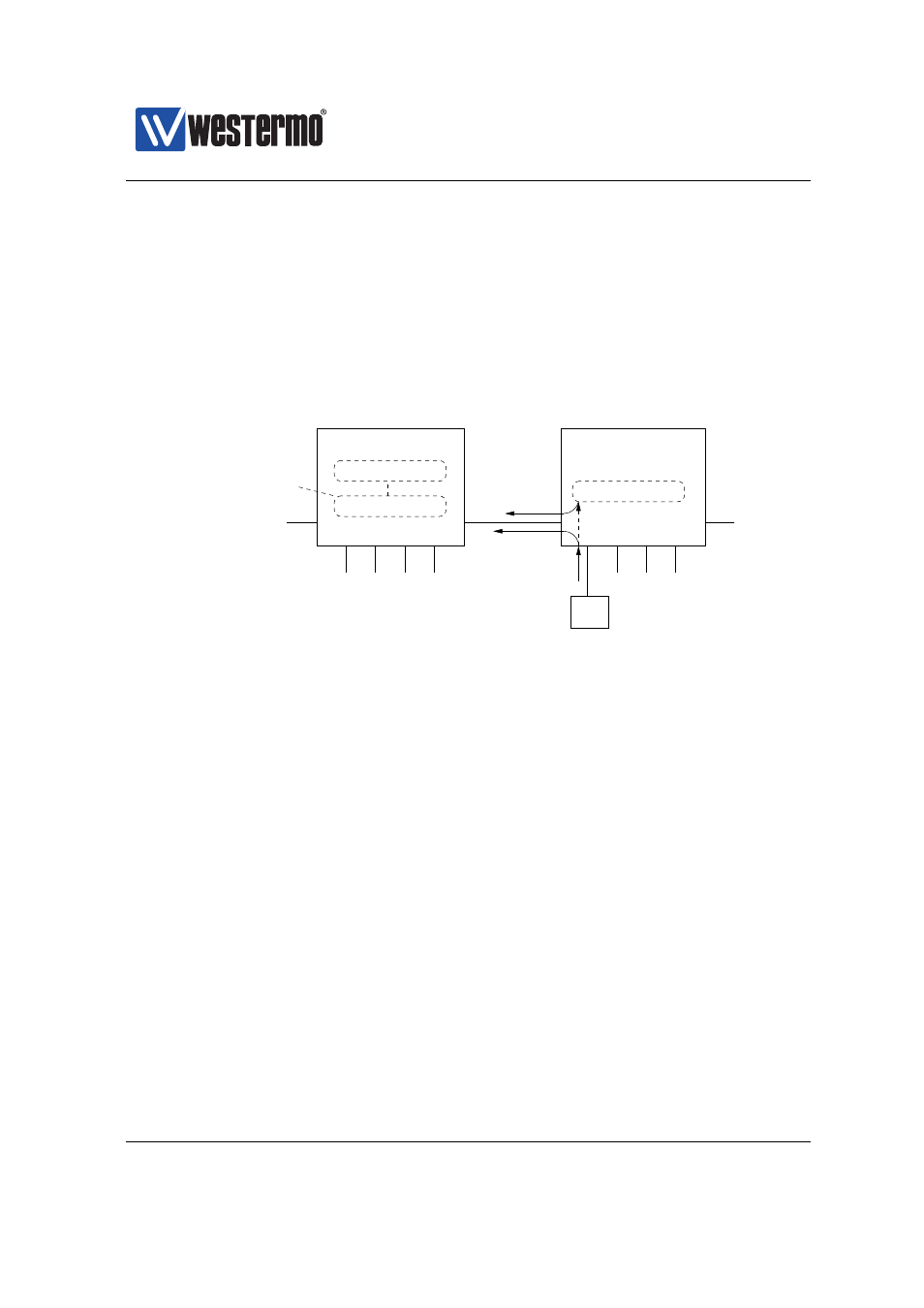Tion 22.1.4.2 – Westermo RedFox Series User Manual
Page 497

Westermo OS Management Guide
Version 4.17.0-0
22.1.4.2
Handling non-snooping relay agents in switched topologies
As described in
, use of relay agents to add option 82 information
in switched topologies is challenging if the relay agents do not support DHCP
snooping. A (broadcast) DHCP message from a client will then result in two mes-
sages being forwarded towards the DHCP server - one relayed message including
option 82 information, and one regular message being switched and lacking op-
tion 82.
DHCP Server
Relay Agent
CCTV
1
2
3
4
5
6
1
2
3
4
5
6
Relay Agent
Option 82
With
Option 82
Without
DHCP Msg
WeOS Router/Switch
10.1.1.1/24
10.1.1.2/24
.44
Drop DHCP packets
lacking option 82
coming in on port 6
module in RedFox)
Switch (e.g., "Gbit−")
Non−’’DHCP snooping’’
Figure 22.5: A non-”DHCP snooping” relay agent (right unit) will likely result in
multiple ”copies” of the DHCP messages. This can be handled by running a DHCP
Relay Agent also the DHCP server unit (left unit).
illustrates the situation. All ports are assumed to be on the same VLAN
(e.g., VLAN 1)
1. A broadcast DHCP message is sent by the PC on port 1 of the non-snooping
switch. That packet is forwarded onto all ports on the same VLAN including
port 5 towards the DHCP server.
2. The packet is also processed by the relay agent process, which adds option
82 information and relays the message (unicast) towards the DHCP server.
3. If both DHCP requests would reach the DHCP server, it is likely that the PC
will be handed an address from the pool rather than an address dedicated
for that specific port. Or possibly the PC will get multiple responses to its
request.
In WeOS you can handle this by running a DHCP relay agent on the DHCP
server unit. The relay agent can be configured to drop DHCP packets not
including option 82, thus only the relayed packet will be forwarded to the
➞ 2015 Westermo Teleindustri AB
497
